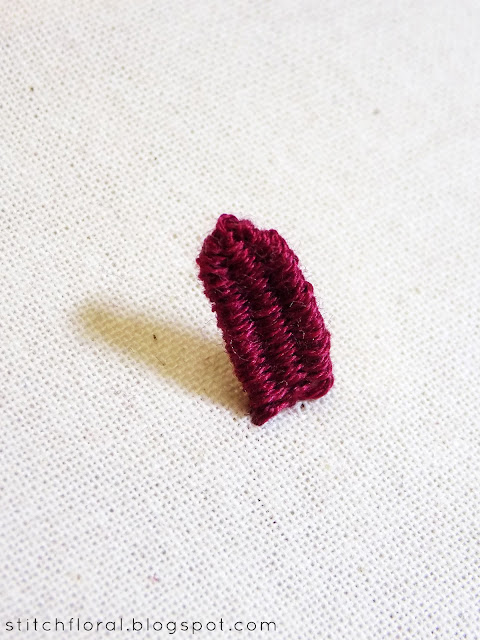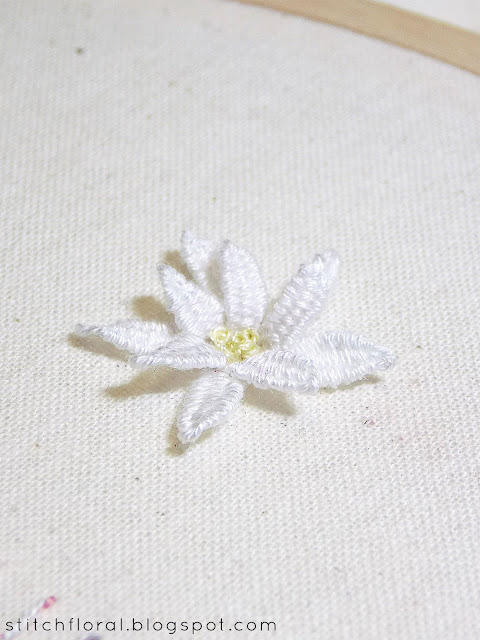And here is one more stitch you can use for working dimensional flowers!
It probably will be the last stitch in the series of “dimensional flowers” tutorials. If you missed any of the previous ones, you can catch up in the links below:
Naturally, there are many more techniques and stitches but I guess it is already enough for working a simple but pretty bouquet or a filed of realistic wildflowers. Maybe we can even work something together someday :)
But first, let's finish our series by learning woven picot stitch.
Woven Picot tutorial
1. To work this stitch you will need a sewing pin. Insert it in the fabric so that the bit of the fabric it picks up corresponds to the place and height of the future stitch. Then come up through the fabric at the starting point to the side of the pin. Pass the working thread behind the pin and end the stitch on the other side of the pin.
2. Bring the needle up again, this time closer to the pin's shaft, as close to the middle between the previous two points as possible. And pass the working thread behind the pin again.
3. Now we start weaving motions. Slide the needle under the first string, over the second one, and under the third one.
4. Next time, needle goes over-under-over. Keep changing the motions of weaving when you move from one side to the other.
5. Make sure the horizontal rows of the interlacing are placed evenly with no gaps and holes.
6. As you reach the bottom, finish your picot by inserting the needle back in the fabric.
When your picot is complete, remove the pin. At first, your picot might be standing upright, but you can adjust it the way you want. You can even anchor it to the fabric, using the little loop that stays on top after the pin is taken out.
You can also achieve other appearance with this stitch.
For example, a narrow base + a longer body + pulling the thread tighter at the top when weaving...
... can result in a longer and sharper-tipped shape.
Here is an example of a simple flower with woven picot-worked petals.
Only after working it, have I realized that it reminds me of water lily, haha. I didn't really have any certain plant in my mind when I worked it, it was just for practice :)
So, now you have quite a bunch of techniques for making dimensional flowers. Hope you include some of these in your next project!


















No comments
Write what you think! ❤
Note: Only a member of this blog may post a comment.